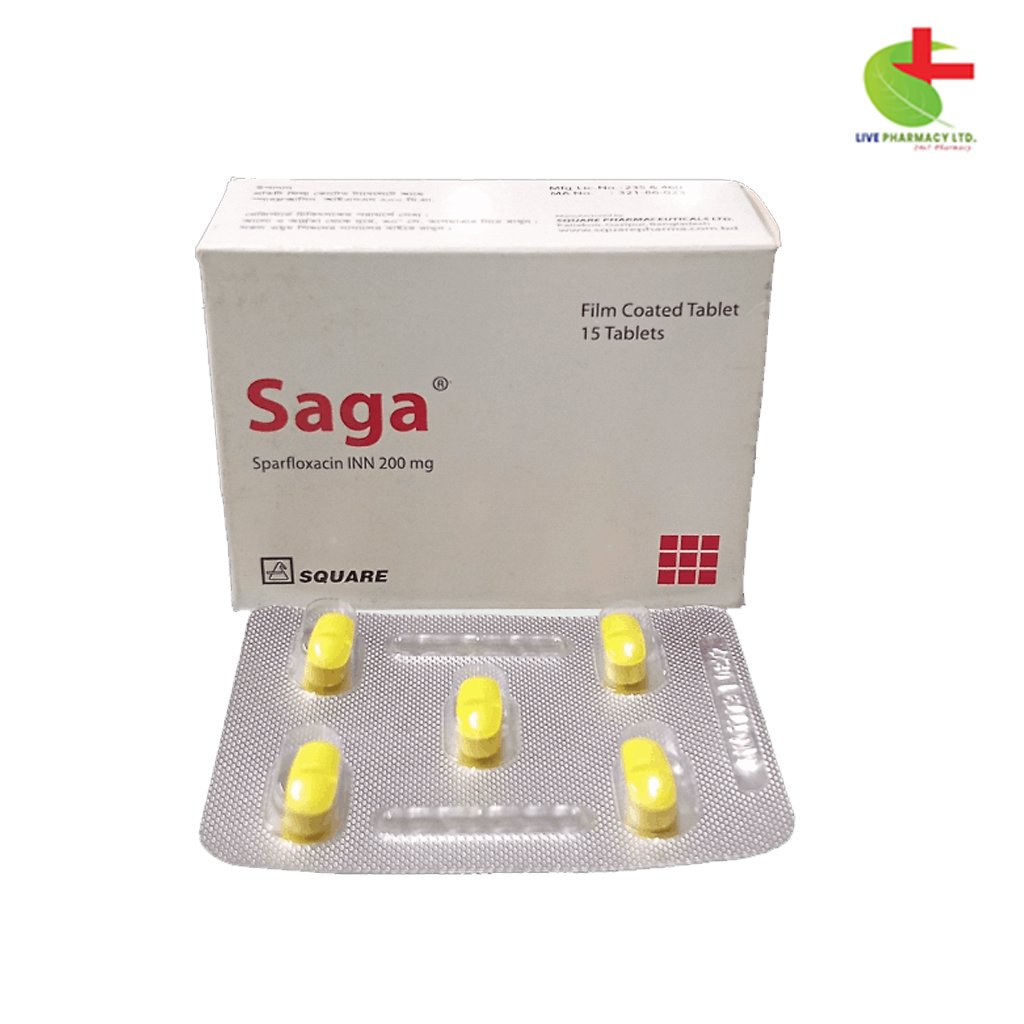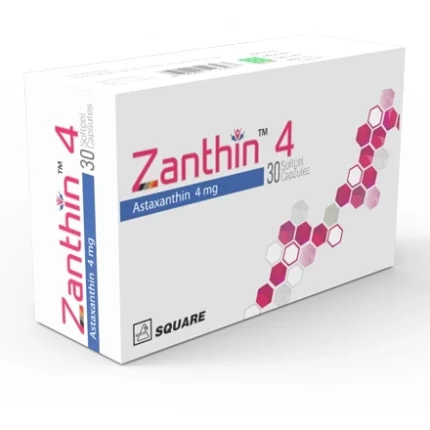Saga 200
75.25৳ Strip
- Sparfloxacin, marketed as Saga, is a potent antibacterial medication.
- It is prescribed for adults to treat infections such as community-acquired pneumonia and chronic bronchitis exacerbations.
- Saga is effective against a variety of bacteria in the respiratory tract, lungs, and urinary system.
- Known for its high bioavailability and extensive tissue penetration.
- Supported by clinical trials, it’s a trusted choice for combating bacterial infections.
 Brand
Brand
|
Square Pharmaceuticals PLC |
|---|---|
 Generics
Generics
|
Sparfloxacin |
 Type
Type
|
Tablet |
Indications
Saga is prescribed for adults (18 years and older) to treat infections caused by susceptible strains of microorganisms:
- Community-acquired pneumonia (CAP) caused by Chlamydia pneumoniae, Haemophilus influenzae, Haemophilus parainfluenzae, Moraxella catarrhalis, Mycoplasma pneumoniae, or Streptococcus pneumoniae.
- Acute bacterial exacerbations of chronic bronchitis (ABECB) caused by Chlamydia pneumoniae, Enterobacter cloacae, Haemophilus influenzae, Haemophilus parainfluenzae, Klebsiella pneumoniae, Moraxella catarrhalis, Staphylococcus aureus, or Streptococcus pneumoniae.
- Also indicated for Chronic Obstructive Pulmonary Disease (COPD), Acute Maxillary Sinusitis (AMS), urinary tract infections including gonococcal and nongonococcal urethritis, chancroid, bacterial prostatitis, bacterial diarrhea, osteomyelitis, tuberculosis (in combination with rifampicin and isoniazid), and leprosy (in combination with standard drugs).
Pharmacology
Saga contains Sparfloxacin, an antibacterial agent that inhibits DNA gyrase and topoisomerase IV, effectively targeting bacteria in the respiratory tract and lungs. Clinical trials have demonstrated its efficacy against various bacterial infections, showing particular potency against gram-positive organisms, Mycobacteria, and Chlamydia spp.
Absorption
Sparfloxacin is well-absorbed orally with 92% absolute bioavailability. Following a 400 mg oral dose, peak plasma concentration averages 1.3 µg/mL, reaching steady-state levels on the first day of therapy. Oral absorption is unaffected by food, although concomitant use with antacids containing magnesium hydroxide and aluminum hydroxide may reduce bioavailability by up to 50%.
Distribution
After absorption, Sparfloxacin distributes extensively throughout the body, reflected by a large volume of distribution (Vdss) of 3.9 L/kg. It penetrates well into respiratory tissues and fluids, achieving concentrations significantly higher than in plasma. Sparfloxacin also accumulates in alveolar macrophages.
Metabolism and Excretion
Metabolism primarily occurs in the liver via glucuronidation, with minimal involvement of cytochrome P450 enzymes. Clearance rates are 11.4 L/hr (total) and 1.5 L/hr (renal). Approximately 50% of Sparfloxacin is excreted unchanged in feces and urine.
Dosage & Administration
For adults with normal renal function, the recommended dose includes a loading dose of two 200 mg tablets on the first day, followed by one tablet daily for 10 days. Adjustments are necessary for patients with renal impairment.
Interaction
Saga interacts adversely with antacids containing aluminum or magnesium cations and medications prolonging the QTc interval. It does not interact with theophylline, caffeine, warfarin, or cimetidine.
Contraindications
Sparfloxacin is contraindicated in patients hypersensitive to its components, those with Glucose-6-Phosphate Dehydrogenase (G6PD) deficiency, a history of Achilles tendinitis from fluoroquinolones, and during pregnancy/lactation.
Side Effects
Common side effects include photosensitivity reactions, diarrhea, nausea, headache, dyspepsia, dizziness, insomnia, abdominal pain, pruritus, taste perversion, QTc interval prolongation, vomiting, flatulence, and vasodilatation.
Precautions & Warnings
Special precautions include avoiding excessive sunlight exposure due to potential phototoxic reactions. Use in children, adolescents, pregnant women, and lactating women should be approached cautiously due to limited safety data.
Use in Special Populations
Saga’s pharmacokinetics are unaffected by age (elderly), gender, or mild to moderate hepatic impairment. Renal impairment requires dosage adjustment.
Therapeutic Class
Saga belongs to the therapeutic class of 4-Quinolone preparations.
Storage Conditions
Store Saga below 30ºC, away from heat and direct light, and out of children’s reach.













Reviews
There are no reviews yet.